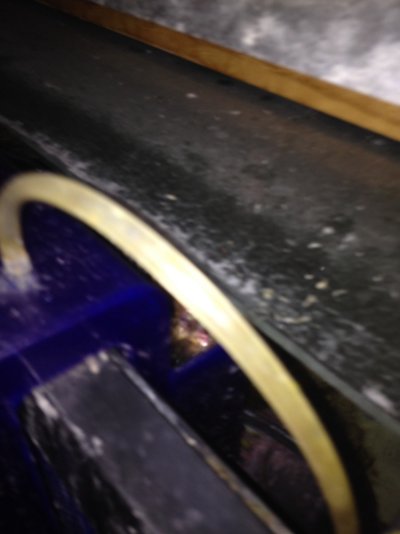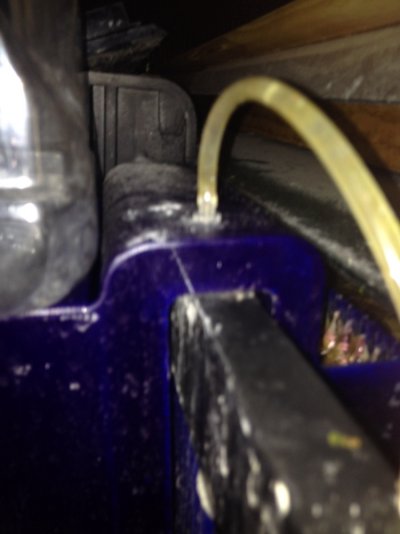You are using an out of date browser. It may not display this or other websites correctly.
You should upgrade or use an alternative browser.
You should upgrade or use an alternative browser.
Overflow box questions
- Thread starter mattcham
- Start date
The friendliest place on the web for anyone with an interest in aquariums or fish keeping!
If you have answers, please help by responding to the unanswered posts.
If you have answers, please help by responding to the unanswered posts.
- Status
- Not open for further replies.
Dav3
Aquarium Advice Addict
Again, just match pump flow after headloss to rated flow of overflow. Get as close as you can or go oversized a bit with the pump and just dial it back a bit.
Just need to keep the air bubbles from building in the tube. Get flow fast enough and it will flush any bubbles out.
Just need to keep the air bubbles from building in the tube. Get flow fast enough and it will flush any bubbles out.
I have an overflow with a nipple for a piece of airline hose. The first time I set it up I sucked the air out and put the hose into the water. Never needed to "reprime" it since. I live in fl and our lights go out daily.
So one end of hose is on the nipple and the other end of the hose goes where? Inside the tank down near the bottom floor? Sorry if this is a dumb question because I didn't buy my overflow box yet and the physics of it is still somewhat mysterious to me.
Again, just match pump flow after headloss to rated flow of overflow. Get as close as you can or go oversized a bit with the pump and just dial it back a bit. Just need to keep the air bubbles from building in the tube. Get flow fast enough and it will flush any bubbles out.
You have a drilled tank? Because everything I have read about HOB overflows require a aqua lifter for when power goes out and need to get siphon going again.
My box is square and blue and I do t know the brand. It does not use a siphon tube. It is one solid piece. Has a tube tapped into it for a aqua pump or power head air line. (See pictures above) However I have not needed to use anything. Any bubbles that get into the unit flow right down out of the "u" section.
I suppose if my flow rate was lower there would not be enough velocity to flush the bubbles.
The glow thru the unit
I suppose if my flow rate was lower there would not be enough velocity to flush the bubbles.
The glow thru the unit
Dav3
Aquarium Advice Addict
No not drilled. I have hob with similar mechanics to cpr overflow.
The mechanics are simple (to me).
Part 1: If the siphon tube/section has a a nipple for a airline hose then you just need to seal it. Easiest is put some airline hose on it with a check valve($1 @ walmart) on the other end of the airline hose. This will prevent air from interning the siphon through the nipple and thus preventing siphon loss in the event of power failure.
Part 2: you need to match return flow (after headloss) to the rated flow of your overflow. If you have enough flow going through the siphon any air bubbles that enter the siphon will get flushed out. If not enough flow then the air bubbles will accumulate enough to form an air pocket and break siphon.
Part 3: If your return pump is undersized or you don't have the right sized plumbing( more on this next) for your return lines then you will not have enough flow and you will need the aqua lifter to suck the air out.
Part 4: Plumbing has to be big enough to maximize the flow from your return pump. Mag 7 for instance has a .5" threaded output but you need to at least double that to 1" plumbing for maximum flow As per mag drive manufacturer instructions. You will need to look into plumbing sizes for your particular pump brand.
The mechanics are simple (to me).
Part 1: If the siphon tube/section has a a nipple for a airline hose then you just need to seal it. Easiest is put some airline hose on it with a check valve($1 @ walmart) on the other end of the airline hose. This will prevent air from interning the siphon through the nipple and thus preventing siphon loss in the event of power failure.
Part 2: you need to match return flow (after headloss) to the rated flow of your overflow. If you have enough flow going through the siphon any air bubbles that enter the siphon will get flushed out. If not enough flow then the air bubbles will accumulate enough to form an air pocket and break siphon.
Part 3: If your return pump is undersized or you don't have the right sized plumbing( more on this next) for your return lines then you will not have enough flow and you will need the aqua lifter to suck the air out.
Part 4: Plumbing has to be big enough to maximize the flow from your return pump. Mag 7 for instance has a .5" threaded output but you need to at least double that to 1" plumbing for maximum flow As per mag drive manufacturer instructions. You will need to look into plumbing sizes for your particular pump brand.
Dav3
Aquarium Advice Addict
Read previous post first.
Basics: if there is air in your siphon after return pump turns off then you may loose siphon when pump goes back on.
If you have air in siphon after powerless you have one of 2 issues that you should resolve.
1) return pump or plumbing undersized.
2) leak in siphon tube. Via nipple if one exists.
Relying on an Aqualifter that can fail doesn't sound like a good idea to me. Better to fix the issue.
Basics: if there is air in your siphon after return pump turns off then you may loose siphon when pump goes back on.
If you have air in siphon after powerless you have one of 2 issues that you should resolve.
1) return pump or plumbing undersized.
2) leak in siphon tube. Via nipple if one exists.
Relying on an Aqualifter that can fail doesn't sound like a good idea to me. Better to fix the issue.
jeffaquarius
Aquarium Advice Addict
There is no way siphon will start by itself without priming it first. Dav3 himself mentioned that he primed his overflow at first. So why remove the aqua lifter if you already have it? Why not just leave it there since there is no 100% guarantee that your overflow will be immune to bubbles?
jeffaquarius
Aquarium Advice Addict
Again, just match pump flow after headloss to rated flow of overflow. Get as close as you can or go oversized a bit with the pump and just dial it back a bit.
Just need to keep the air bubbles from building in the tube. Get flow fast enough and it will flush any bubbles out.
I would rather have an over sized overflow box than under sized. If you miscalculate your flow by the gate valve at the return, guess what will happen? If the return is even just slightly more than your overflow you won't notice it and one day when you come home you will find your DT is flooding your floor.
Just remember in CPR overflow box the air pocket that is trapped due to accumulation of air bubbles always stays above the water flowing on the U chamber. Even if you have to set your DT level at max it will not remove that air pocket without using an aqua lifter.
Dav3
Aquarium Advice Addict
There is no way siphon will start by itself without priming it first. Dav3 himself mentioned that he primed his overflow at first. So why remove the aqua lifter if you already have it? Why not just leave it there since there is no 100% guarantee that your overflow will be immune to bubbles?
Well yes you have to prime it once. But that is all.
With a properly configured system the siphon will remain primed when the power goes out.
There is no guarantee that the Aqualifter will work when you need it to.
Dav3
Aquarium Advice Addict
I would rather have an over sized overflow box than under sized. If you miscalculate your flow by the gate valve at the return, guess what will happen? If the return is even just slightly more than your overflow you won't notice it and one day when you come home you will find your DT is flooding your floor. Just remember in CPR overflow box the air pocket that is trapped due to accumulation of air bubbles always stays above the water flowing on the U chamber. Even if you have to set your DT level at max it will not remove that air pocket without using an aqua lifter.
This is simple as well. Decrease flow with gate and them force a few air bubbles into the overflow if they stay in siphon section then flow to low. Slowly increase flow till the bubbles flush out.
Dav3
Aquarium Advice Addict
If you want to rely on a Aqualifter then that's fine. My point is it's not needed.
mr_X
Aquarium Advice Addict
But an aqualifter is a good insurance policy.....Not necessarily to rely on, but to have as a fail safe.Relying on an Aqualifter that can fail doesn't sound like a good idea to me. Better to fix the issue.
- Status
- Not open for further replies.
Similar threads
- Replies
- 14
- Views
- 1K
- Replies
- 3
- Views
- 416
- Replies
- 5
- Views
- 385
- Replies
- 6
- Views
- 1K


